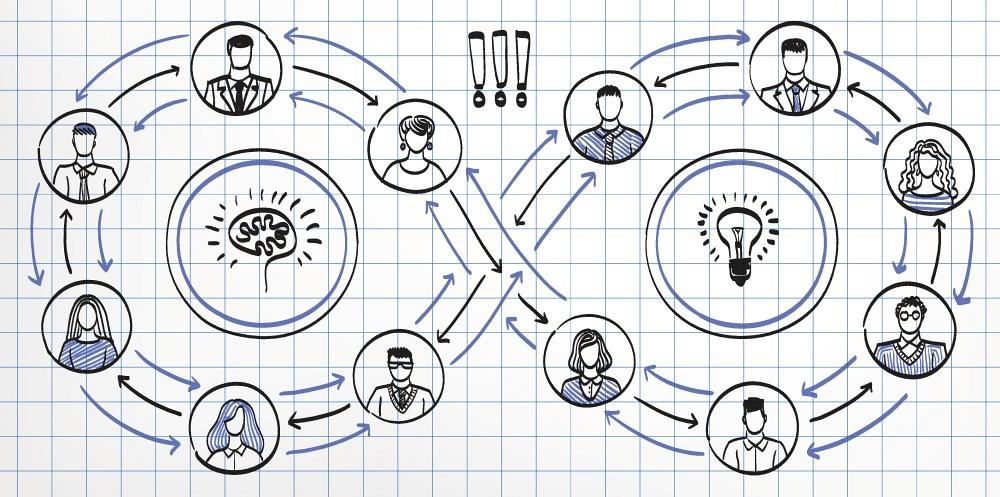Principal
- FMA
- The Fabricator
- FABTECH
- Canadian Metalworking
Categories
- Additive Manufacturing
- Aluminum Welding
- Arc Welding
- Assembly and Joining
- Automation and Robotics
- Bending and Forming
- Consumables
- Cutting and Weld Prep
- Electric Vehicles
- En Español
- Finishing
- Hydroforming
- Laser Cutting
- Laser Welding
- Machining
- Manufacturing Software
- Materials Handling
- Metals/Materials
- Oxyfuel Cutting
- Plasma Cutting
- Power Tools
- Punching and Other Holemaking
- Roll Forming
- Safety
- Sawing
- Shearing
- Shop Management
- Testing and Measuring
- Tube and Pipe Fabrication
- Tube and Pipe Production
- Waterjet Cutting
Industry Directory
Webcasts
Podcasts
FAB 40
Advertise
Subscribe
Account Login
Search
How behavior can sustain (or stop) continuous improvement in lean manufacturing
Never underestimate the behaviors that drive metal fabrication shops to improve
- By Jeff Sipes
- August 27, 2021
- Article
- Shop Management

Many companies focus on the hard side of improvement—the 5S, the standard work, the workcells—but ignore the soft side, including the behaviors that drive people to improve. Getty Images
The lean-sigma body of knowledge is filled with reasonably precise improvement methods. You calculate takt time and get a specific value. You arrange a U-shaped cell and have a targeted travel distance. You determine the pitch to identify how many pieces of a component should go into a container before it moves to the next operation. And, of course, there is 5S. You follow the five elements in the prescribed order to achieve demonstrable improvements in orderliness and cleanliness.
These are good examples of ways to analyze and improve, but what about the soft side of lean sigma? You need people to execute lean tools, and they need to perform work in a certain way to ensure variation is minimized and controlled. What determines whether people execute and deliver the results you need?
One answer is behavior. The behaviors of individuals and organizations speak volumes about how a company performs, and understanding them is fundamental to a sustainable lean journey.
What Is a Behavior?
A behavior as it relates to your lean journey is how a person conducts himself when no one is looking, and how a person interacts with other employees and systems in the organization. Although the definition is broad, it provides a structural way to understand the connection between a person and his or her work.
Behaviors become established as a result of the environment in which people operate, whether inside or outside the company, and they can be learned through education, training, and coaching. Although you do not influence your employees’ environment outside the company, you certainly influence (either knowingly or unknowingly) their environment within the company.
The metrics you use drive behavior, but do those metrics drive the desired behavior? You have expectations for throughput times, work-in-process levels, and flow. But what if your metrics overemphasize efficiency and fail to address effectiveness? If operators and supervisors always strive to achieve the highest efficiency percentage, they may create excess inventory by cherry-picking easy orders and making products you really don’t need. That efficiency metric, when used in isolation, encourages anti-lean behavior.
Fostering Desired Behaviors
Imagine an operation with continuous flow, where everyone has a deep understanding of process performance, consistently works to drive out waste, and constantly strives to make the business better. What behaviors bring this ideal lean operation to life? There is no one prescriptive solution. Some behaviors might be unique to your company or industry, but a few are universal.
Customer-centric Approach. Everyone understands and appreciates the customer. This includes external customers who buy your products as well as internal customers who use what you produce, whether it is a physical product, a piece of data, or a decision. Customer-centric behavior illustrates what you are in business to do.
5S Mentality. A place for everything and everything in its place—such behavior allows you to be “customer visit ready” any time, any day, and without warning. People with a 5S mentality don’t wait for someone to tell them what to do. They know. They do it. They act in a 5S way.
Thinking of Upstream and Downstream Processes. Process thinking is a learned skill. It might be broader in scope for the manager or executive compared to the welder or material handler. But in either case, there are inputs to and outputs from a process, upstream (toward a supplier) and downstream (toward the customer). People demonstrate this behavior when they strive to learn about and improve the broader process.
Value-adding and Non-value-adding Logic. You changed something, you did it right the first time, and your customer is willing to buy it. That in a nutshell defines value in the workplace. Employees who understand this seek ways to reduce non-value-adding work and improve value-adding work, even when no one is looking.
Adherence to Standard Work to Drive out Variation. A few in your organization might have the statistical skills that foster a deep understanding of variation, but everyone should at least have a basic understanding of the concept. Variation exists in all your processes, but how much variation is acceptable? Here is where standard work plays a role. Those who stick to standard work ensure a job is done consistently. They also understand that work standards are liberating rather than constricting, freeing them—through future kaizens and other events—to dream up ways to make that standardized work better.
Why Are Behaviors So Difficult to Sustain?
A variety of forces make it difficult to define, establish, and (especially) sustain desired behaviors. Consider a welder who insists on tampering with the operational settings even though the standard work has been clearly defined, or the machine operator who just won’t put tools away, or the supervisor who continues to turn a blind eye to employees who fail to wear the prescribed PPE. They’re not bad people, but why do they fail to act out the desired behaviors? What forces cause people and organizations to backslide?
Blame the rubber band effect, the force that’s always trying to pull you and everyone else back to old behaviors. You can sense the rubber band pulling back when you hear, “That’s the way we’ve always done it, so why change?” People may fear trying something different: “What if it doesn’t work and I get blamed?” You’ll need to investigate to learn why these negative beliefs exist. The rubber band also might pull back because of peer pressure, like when a new employee is influenced by strong-willed shop veterans.
What if a lead person is a great employee but comes from the mold of always having to be doing something, always being on the move, and tends to thrive on chaos? A new, measured, less chaotic approach might feel unnatural. That’s the rubber band pulling back again. Sometimes you have to slow down, ensure people learn a new process, and repeat it until it becomes natural. Provide positive affirmations when the desired behavior happens. With time and persistence, the new behavior can become the way the work is done.
There are no easy answers, no cookbook recipe for changing and instilling desired behaviors. What’s important in your business may be a bit different than what’s important at another company. You and your leadership team must objectively and dispassionately evaluate what set of desired behaviors fit your needs.
Don’t Overlook the Soft Side
All lean journeys have a hard side (technical issues, tools, methods, equations) and an equally important soft side (people, behavior, relationships). Both are essential, though the soft side tends to be overlooked and underestimated.
By addressing the important desired behaviors in a front-and-center fashion, you help find the delicate balance between the hard side and soft side. You have an obligation to help your employees learn new behaviors when appropriate. The learning happens through coaching, training, measuring, and holding people accountable.
Lasting and sustainable results cannot be gained simply by dictating that people must follow and act out a new behavior. At best, you get short-lived, watered-down results. At worst, you get revolt.
Success in a highly functioning lean organization takes time and hard work, but when the desired behaviors really become the way you do business, even when no one is looking, the sky is the limit!
About the Author

Jeff Sipes
9250 Eagle Meadow Dr.
Indianapolis, IN 46234
(317) 439-7960
subscribe now

The Fabricator is North America's leading magazine for the metal forming and fabricating industry. The magazine delivers the news, technical articles, and case histories that enable fabricators to do their jobs more efficiently. The Fabricator has served the industry since 1970.
start your free subscription- Stay connected from anywhere

Easily access valuable industry resources now with full access to the digital edition of The Fabricator.

Easily access valuable industry resources now with full access to the digital edition of The Welder.

Easily access valuable industry resources now with full access to the digital edition of The Tube and Pipe Journal.
- Podcasting
- Podcast:
- The Fabricator Podcast
- Published:
- 04/30/2024
- Running Time:
- 53:00
Seth Feldman of Iowa-based Wertzbaugher Services joins The Fabricator Podcast to offer his take as a Gen Zer...
- Industry Events
Pipe and Tube Conference
- May 21 - 22, 2024
- Omaha, NE
World-Class Roll Forming Workshop
- June 5 - 6, 2024
- Louisville, KY
Advanced Laser Application Workshop
- June 25 - 27, 2024
- Novi, MI
Precision Press Brake Certificate Course
- July 31 - August 1, 2024
- Elgin,































